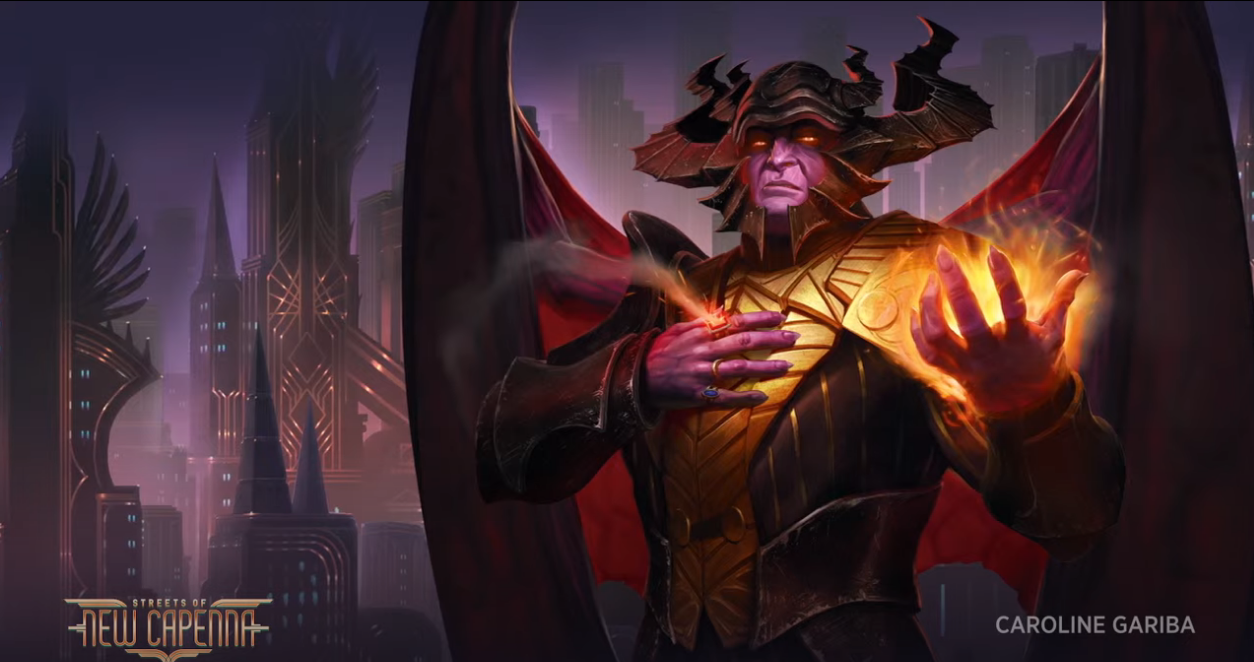
The Streets of New Capenna is coming this April 29th and what I am most excited about aside from the flavor and the mechanics is to try out the new cards in the Stanard format. There are now a few relevant Standard tournaments scheduled in the local setting and also online and we are looking forward to what will be the impact of this upcoming set.
For today, we will go with the card analysis of each spoilers that started Thursday last week. If you have been checking on some of the Magic: the Gathering card spoilers website, there have been a whole batch of new cards revealed and some has been quite interesting in the combination of the card name, flavor, and what it does in the gameplay. This may not be officially the first since we had already discussed the two family charms in an older blog post.
For this batch, we will begin with the card Arcane Bombardment. This Red Mythic enchantment goes with a six mana but it will be worth it if it sticks on the board.

Izzet Spells is the automatic Standard deck build and while it may took the long game in most the matchups, this card is fit for the job. At that time, the graveyard is likely filled with the cards that were cast the previous turns and the likes of burn spells and card draws are good spells to copy and recast. The only drawback is probably having it at random and you won’t know what you’d hit. In which case, you adjust the deck build for composing more of a utility spells such as Commands for example. I’d assume this might not be a hit right away in Standard but its EDH potential is highly considered.
Next up is Corpse Examiner, the Maestro’s utility three-drop creature.

When Corpse Examiner enters the battlefield, exile up to one target creature card from a graveyard. If you put a card into exile this way, look at the top three cards of your library, then put one of them into your hand and the rest into your graveyard.
A 3/3 body for three with ETB ability is worth it but the only requirement is a target creature card from the graveyard. Exiling it is then needed for the other “Ponder” ability to resolve. Flavor-wise, it fits really well with the card name and its ability. Much more is its worth in the late game, removing opponents’ recurring creatures from their yard.
The third on this batch is Cut the Profits, a Black card draw at the cost of life with the chance of double casting it.

For two Black and X, you can get to play it at the least at turn four for two cards and two life. The Casualty option is good to fit in a deck with cards like Meathook Massacre and other ways to gain life to recoup the life loss effect of the card. This will favor more if you have creatures that have Dies trigger effect. In the deck build, two copies may be enough as this requires more mana to be efficient and the life loss may be situational as it can be a drawback in certain board state.
Next up is Green’s version of a “Treasure” utility card. Check out Courier’s Briefcase.

It gets you a 1/1 Green White Citizen creature token and later on lets you ramp or fix your mana cost in a three-color deck, for example. The draw three cards ability will mostly not happen in a common deck setup but if you have ways in the deck to recur casting artifacts from your graveyard (i.e. Second Sunrise) then this is a good inclusion. I am expecting this to be a staple component of Green-based midrange decks in Standard.
This next card is probably the newest version of a creature tutor Artifact. It is called the Evolving Door.

Forum users called it as “color pod” because of the creatures gauged according to the colors of its mana cost. Basing on the popular Birthing Pod, it virtually has the same mana cost if the Phyrexian mana is paid. Its ability’s efficiency relies on the deck build that support at least three colors. With the family theme in Capenna, it is highly to support the ability with more creature card options. Casting the card, however, is not free and so by the time you activate its ability, you make sure that you have enough mana fix to be able to resolve casting the tutored card.
The last for this batch of Streets of New Capenna card spoiler discussion is the not-so-lucky dude who saw a crime but could not report it to the authorities right away. The card is Unlucky Witness.

At first glance, this is automatically Rakdos sacrifice’s new fodder target. Letting you cast more of one of the top two cards of your library when it dies get an advantage and much more if you used it for cards like Deadly Dispute. The phrase “play” means that you play a land if one of them are available from the top two cards. Unlucky Witness can trade early on for other X/1s if the matchup gets aggressive, or can just chump-block big creatures in the late game. The Rakdos or Mardu Sacrifice deck can get this upgrade and maybe replace a few one-drops to give the deck more variance in its gameplay.
That is a wrap for this batch. For the next one, I will try to do a video discussion of the cards to make it more interactive-looking as possible. I will also try to be more clear and precise in my voice. Maybe gargle some Bactidol before the recording. Lol.
Until the next blog post.
